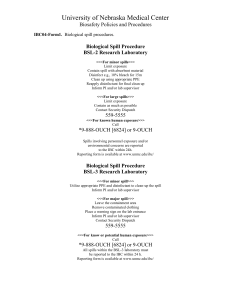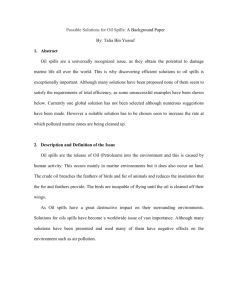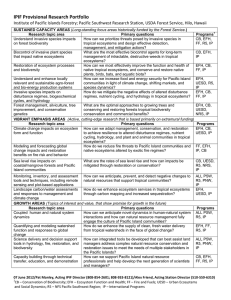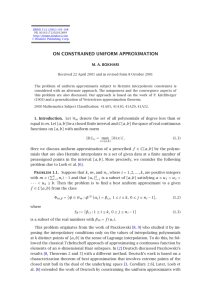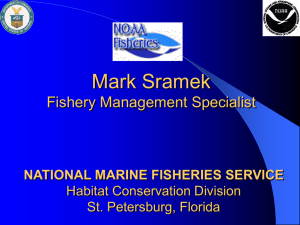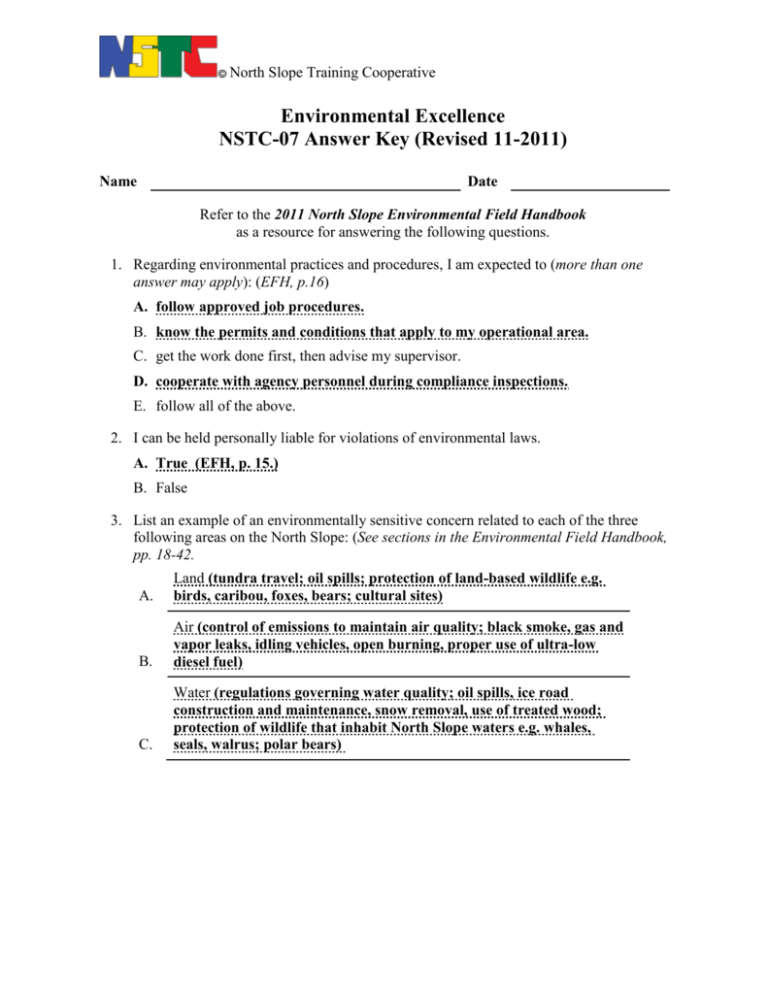
North Slope Training Cooperative
Environmental Excellence
NSTC-07 Answer Key (Revised 11-2011)
Name
Date
Refer to the 2011 North Slope Environmental Field Handbook
as a resource for answering the following questions.
1. Regarding environmental practices and procedures, I am expected to (more than one
answer may apply): (EFH, p.16)
A. follow approved job procedures.
B. know the permits and conditions that apply to my operational area.
C. get the work done first, then advise my supervisor.
D. cooperate with agency personnel during compliance inspections.
E. follow all of the above.
2. I can be held personally liable for violations of environmental laws.
A. True (EFH, p. 15.)
B. False
3. List an example of an environmentally sensitive concern related to each of the three
following areas on the North Slope: (See sections in the Environmental Field Handbook,
pp. 18-42.
A.
Land (tundra travel; oil spills; protection of land-based wildlife e.g.
birds, caribou, foxes, bears; cultural sites)
B.
Air (control of emissions to maintain air quality; black smoke, gas and
vapor leaks, idling vehicles, open burning, proper use of ultra-low
diesel fuel)
C.
Water (regulations governing water quality; oil spills, ice road
construction and maintenance, snow removal, use of treated wood;
protection of wildlife that inhabit North Slope waters e.g. whales,
seals, walrus; polar bears)
Environmental Excellence NSTC-07 Answer Key (Revised 11-2011)
4. We must all do our part to prevent spills or releases from impacting the environment. List
four elements of spill prevention and control. (EFH, Section 7, pp. 43-50)
A.
Know your local spill prevention and reporting procedures.
B.
Use vehicle drip-pan liners and secondary containment.
C.
Practice good housekeeping and follow job procedures.
D.
Report spills and releases immediately. Ask if not sure.
5. Spill reporting requires that you:
A. inform your supervisor within 24 hours that a spill has occurred and clean it up using
available materials.
B. notify the appropriate company representative immediately after the spill and
follow your company or local procedures. (EFH, p. 49-50)
C. complete the current job first, then report the spill using the emergency response
numbers for the Department of Environmental Conservation.
D. try to clean up the spill first and report it only if you think you may not have done an
adequate job.
6. Which statement best describes how you can use best practices to minimize wastes
generated on your job?
A. Clean up all spills, re-order, re-stock, and report the spill if time permits.
B. Mix small quantities of wastes for efficiency, store, ship, and follow-up.
C. Plan ahead, reduce, substitute, control the source, reuse, and recycle. (EFH, pp.
52-53.)
D. Minimize spills, clean up all releases, “waste not, want not.”
7. Good waste management practices include (more than one answer may apply):
(EFH, Section 8, pp. 55–67)
A. labeling waste containers clearly with their contents.
B. mixing wastes.
C. segregating wastes.
D. following company or local waste management procedures.
E. all of the above.
Revised 11-2011
©
North Slope Training Cooperative All Rights Reserved
2
Environmental Excellence NSTC-07 Answer Key (Revised 11-2011)
8. Which of the following are appropriate action(s) when encountering wildlife in your work
area?
A. Provide food to hungry or stressed animals.
B. Give wildlife the right-of-way. (EFH, p. 36)
C. Pick up any injured animals you may find.
D. Don’t worry about reporting bears found in your work area to your supervisor or
Security.
9. Polar bear sightings must be reported to Security:
A. within an hour.
B. by the end of the work shift.
C. before lunch.
D. immediately (EFH 40-41)
10. Only trained personnel are allowed to haze polar bears or other wildlife.
A. True (EFH, p. 42)
B. False
11. Many foxes carry rabies and are capable of transmitting it at any time, although they may
not show symptoms.
A. True (EFH, p. 37)
B. False
12. Which of the following is not a special resource for additional waste management training?
A. 2010 Alaska Safety Handbook
B. The Red Book or Alaska Waste Disposal and Reuse Guide
C. Waste Management Certification Training
D. North Slope Manifest
Revised 11-2011
©
North Slope Training Cooperative All Rights Reserved
3





